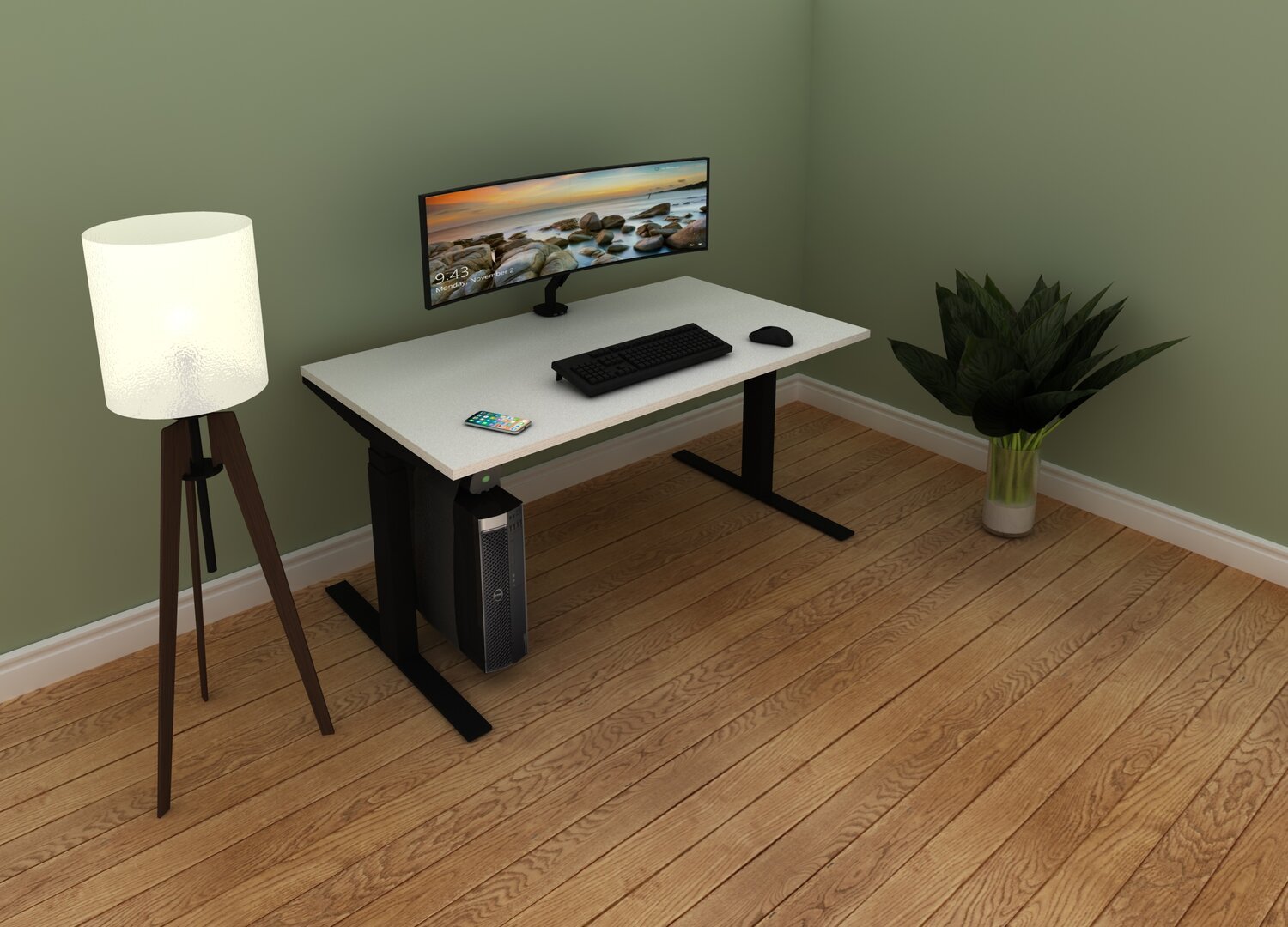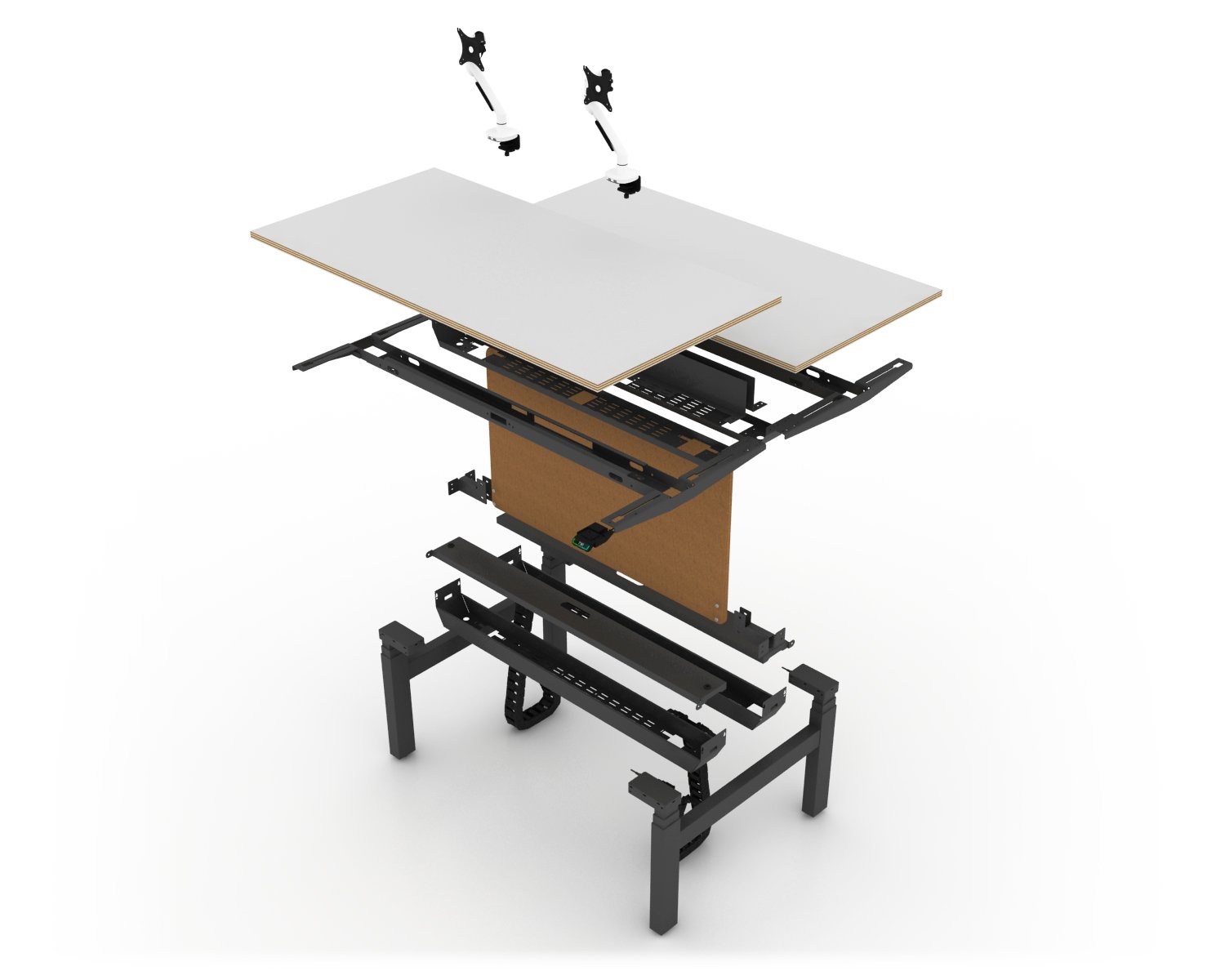Office Desk Buying Guide
Are you looking for the perfect office desk? With so many options available it’s hard to know where to begin. After all, it’s a considerable investment and needs some careful thought. Desks come in a variety of styles and materials so it’s important to find the right one for your needs. Let us help you choose with our desk buying guide.
Which office desk design is best?
6 position B2B height adjustable desk
Height adjustable desk
There is overwhelming evidence that sitting for long periods is bad for us. From blood pressure to back issues sitting for too long affects our bodies in many ways.
A sit stand desk creates a healthier work environment by allowing you to stand for some of your working day. The desktop can change from seated to standing height with the touch of a button.
Height adjustable desks allow you to move from one posture to another without interrupting workflow. A standing desk is also ergonomic in that it's adjustable for different heights and body shapes.
6 position Bench
Bench desk
Bench desks usually have a back to back arrangement and are laid out in a row. They differ from standard office desks in that they have one continuous surface. A benefit of this is that they can have a shared desk frame with fewer legs. This makes them very cost effective, but also means they’re not height adjustable.
They can seat large teams or just two people. The design helps with productivity as employees can communicate and collaborate more easily.
Home office desk
Home office desk
With the move to hybrid working home office desks are becoming widely available. They take up less space than workplace desks and can be designed to fit against a wall. They can also be height adjustable. A desk edge clamp monitor arm and a laptop docking station are useful accessories for a home desk.
Corner and angled desk configurations
Corner desks can help you make full use of your office space by fitting into the corner of a room. The edge of the corner desk can sit flush with the wall or another office desk.
Angled desk configurations can also be space saving and have the benefit of a seating arrangment that encourages ease of communication between teams of users.
What to consider when choosing an office desk
Wave or Linear desktop?
Wave desktops have a curved design and are deeper at the ends. They allow a little extra desktop workspace and have good ergonomics. Their ‘wave’ shape allows you to sit slightly ‘within’ the desk. This gives a bigger desk surface without taking up too much space in the office.
Linear desktops have a straight front edge which can be either ABS lipped or moulded using polyurethane. They allow for optimal use of office space.
What size desk will I need?
This all depends on how much equipment you’re planning to use. If your job requires you to have multiple monitors and other equipment it’s critical to ensure the desk is wide enough to support this. If a desk isn’t used daily, or you only work with a laptop, a smaller width will be more cost effective.
How will IT cable storage be managed?
Poor cable management creates an untidy work environment with a tangle of wires beneath your office desk. This can be avoided with a cable tray and an electrical trough beneath the desktop.
Some desks also have sliding desktops which allow easy access to the cables and power sockets below.
Attaching a desktop connectivity unit to your office desk also helps with cable management. You can plug your devices in on your desktop so no more awkward reaching under the desk.
PC, Laptop or remote processing?
If you're using a desktop PC you'll need to consider how to store it. Options include mounting it under the desk in a PC sling, or PC housing with lockable doors.
A laptop can be converted into a desktop PC with a docking station. This is an essential accessory if you're combining home and office work. A laptop docking station can incorporate into a monitor arm for even more convenience.
For remote processing (with the server(s) housed in a separate server cabinet), there'll be less hardware to store at the desk. This means the client units can be located in an electrical trough or even a below desktop cable tray. This allows more legroom or toe space under the desk.
How much space do I have available?
It’s important to think about the size and layout of your office when choosing the right desk. Everyone will need enough room to move between desks and maintain personal space. It may be necessary to purchase more than one different desk style to maximise space and suit teams with different working styles.
Egger range of desktop finishes
Which desktop finish suits my budget and style?
There is a huge range of options when it comes to desktop materials and finishes. From durable laminate to glass-like acrylic there is a desktop to suit all tastes and budgets.
Try to think about how the desk will be used before selecting a material. For example, an office desk that’s in use for 24 hours in a shift work environment will need high grade, durable materials in its construction. Choosing a desktop finish is a balance of durability, cost and aesthetics. Luckily most suppliers will be able to send you samples. This way you can see whether the desktop matches your work environment.
How much should I spend?
Cost is a key consideration when buying a work desk but that doesn’t mean the cheapest option is best. Low cost furniture may be worse for your budget as it will need replacing after a couple of years.
Buying quality, durable furniture may seem more expensive initially, but in the long run, it's a more economical choice. A cheap office desk may need replacing a few times over a 10 year period, but a higher spec option will only have to be bought once. This enables you to save money. It also helps the environment by saving furniture from ending up as landfill.
If you’re looking for an office desk for your business, then look no further than the extensive range we stock at Technology Desking!










